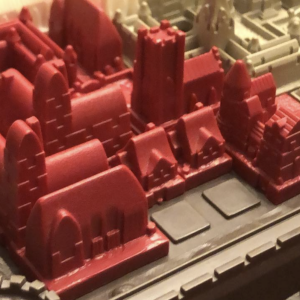
In this insightful episode, we delve into the importance of accessibility in game design, focusing on how physical components can significantly enhance the player experience. We explore how designing game pieces to be easy to handle and distinguishable can make games more inclusive and enjoyable for everyone, drawing parallels with the transformative design of the OXO vegetable peeler.
We highlight various examples from popular board games like "Foundations of Rome," "Tapestry," and "Blood Rage" to illustrate how big, chunky pieces and multiple indicators can improve accessibility. These design choices not only benefit players with disabilities but also enhance the overall experience for all players.
Additionally, we discuss the value of physical supports, such as double-layered tiles and racks in games like "Project L" and "Rummikub," which make handling pieces easier. We also address common pitfalls with poorly designed tokens, using examples from "Star Frontiers" and "War of the Ring," and offer strategies to improve accessibility in game design.
No comments yet. Be the first to say something!